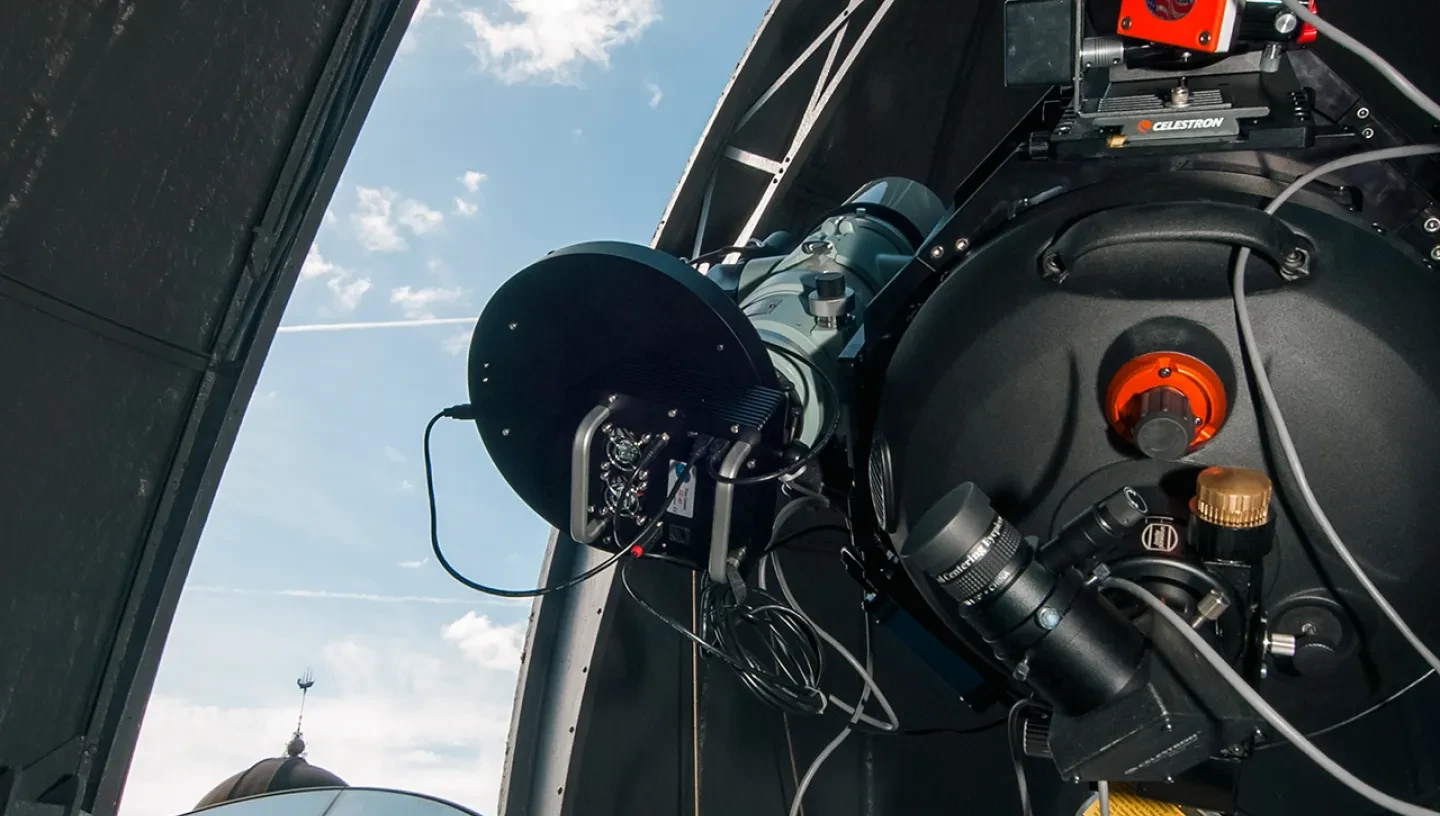
With a telescope we can see billions of miles and travel effortlessly back billions of years in time.
Where there is an observatory and a telescope, we expect that any eyes will see new worlds at once.
Henry David Thoreau
In everyday life we use a telescope or a pair of binoculars when we want to see greater detail on a distant object. The size of the telescope determines how much detail we can see and the brightness of the image.
Astronomical telescopes perform these two tasks. They are big so that they can collect a lot of light from a faint star or galaxy, making their resolution – the ability to see small detail – as good as possible.
The refractor – the familiar one
Most every-day telescopes and binoculars use lenses to gather the light which we see through an eyepiece. Astronomical telescopes that use lenses in this way are called refracting telescopes because the objective lens (at the end furthest from the eye) refracts the light to a focus magnified by the eyepiece.
Astronomers do not use refractors very much nowadays because if we wished to collect a lot of light from a faint object we would need a very large objective lens. The only way to support a large lens is around its edge. The force of gravity would bend the lens away from its design shape when we moved the telescope around the sky.
The reflector – the one in the mirror
A reflecting telescope uses a mirror to collect light instead of a lens. This overcomes the problems inherent in supporting the lens in a refractor and the light losses due to the light passing through thick pieces of glass. The mirror of a reflector is at the bottom end of the telescope tube.
The mirror is a fairly thick, rigid disk of glass whose top surface has been accurately ground and polished so as to reflect all the light falling on it to a focus near the top end of the telescope tube. The top surface is made highly reflective by evaporating a thin film of aluminium on to it in a vacuum. The mirror can be supported around its edge and back surface.
The classical Cassegrain – the prime one
In the classical Cassegrain telescope, the primary mirror is paraboloid shaped. This brings the light of any object in the field of the telescope to a focus near the top end of the tube, called the prime focus. This is used on big telescopes to take pictures of small areas of the sky, using digital detectors called Charge-Coupled Devices (CCDs).
The Schmidt Telescope – the round one
For photography of large areas of the sky the primary mirror is made with spherical curvature and an aspheric 'corrector plate' is placed at the top end of the telescope tube. There are three large Schmidt telescopes in the world with fields about 6° across (the Moon's apparent diameter in the sky is half a degree). The oldest of these is the Palomar Schmidt and the other two are the ESO Schmidt in Chile and the United Kingdom Schmidt in Australia. These have been used to produce photographic charts of the whole sky.
Radio telescopes – the metal one
Most radio telescopes work in the same way as an optical reflecting telescope except that the mirror is made of metal, which reflects the radio waves up to a detector at the prime focus.
Some radio telescopes are single, large, steerable dishes and others are used as arrays whose signals can be linked together to act as a single very large telescope with very high resolution. There are large radio telescopes at Jodrell Bank in Cheshire, the heart of the MERLIN array - a series of six radio telescopes linked across the UK.
Observing from space
We have mentioned radio telescopes, which can be used from the ground because the atmosphere is transparent to radio waves, just as it is to visible light. There are other wavelengths that are absorbed by the atmosphere and do not reach the ground, including X-rays, ultraviolet and far infrared.
The atmosphere also stops us from seeing very sharp detail in images. When you look at the stars at night you can see them twinkle. This is the effect of layers of air at different temperatures, in the atmosphere, bending light towards and away from your eyes. The same bending affects optical telescopes and results in stars appearing as fuzzy blobs, not as pinpoints. Astronomers go to great lengths to put their telescopes where the atmosphere is most stable, but to get the best results we must go outside the atmosphere.